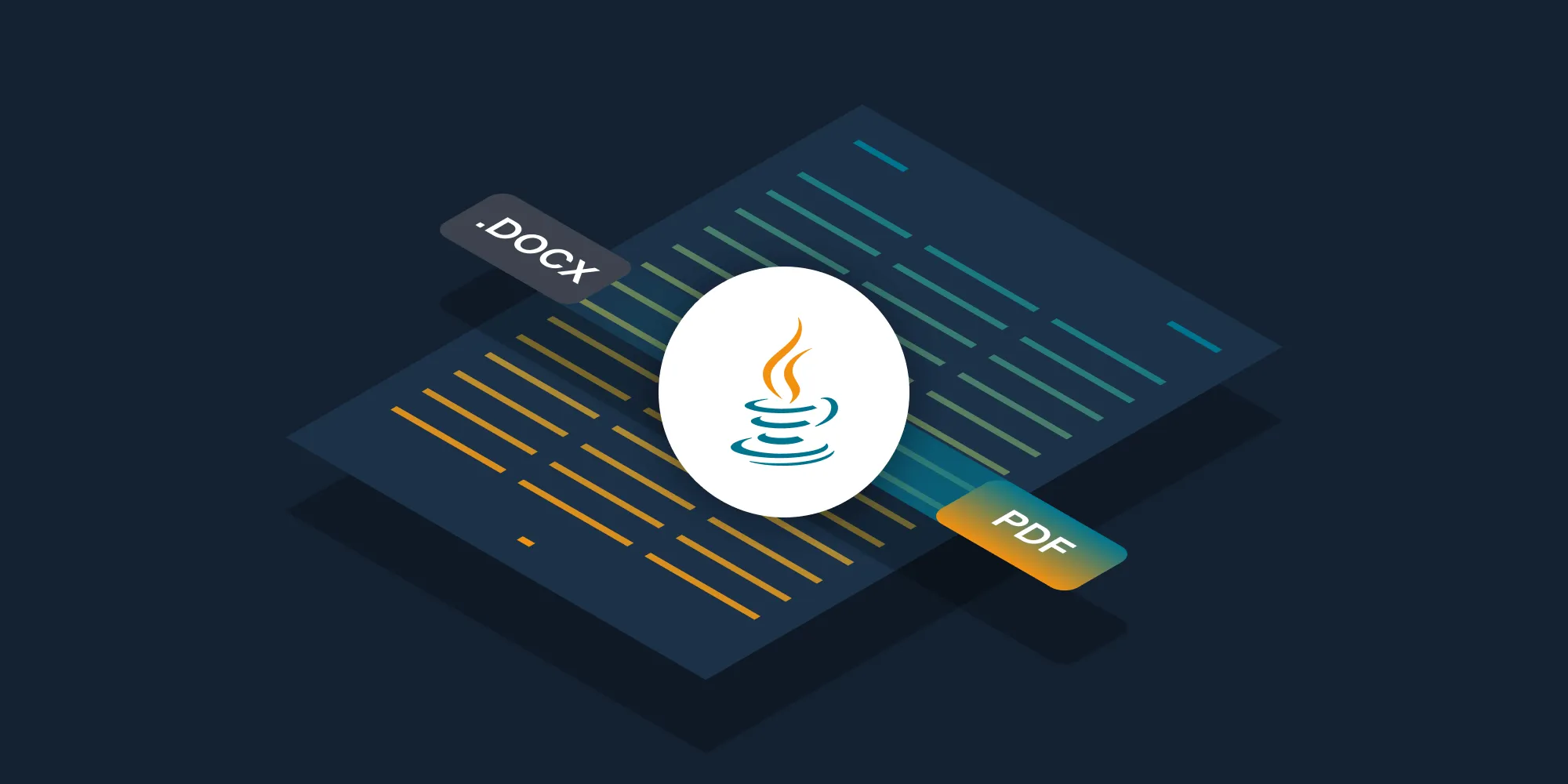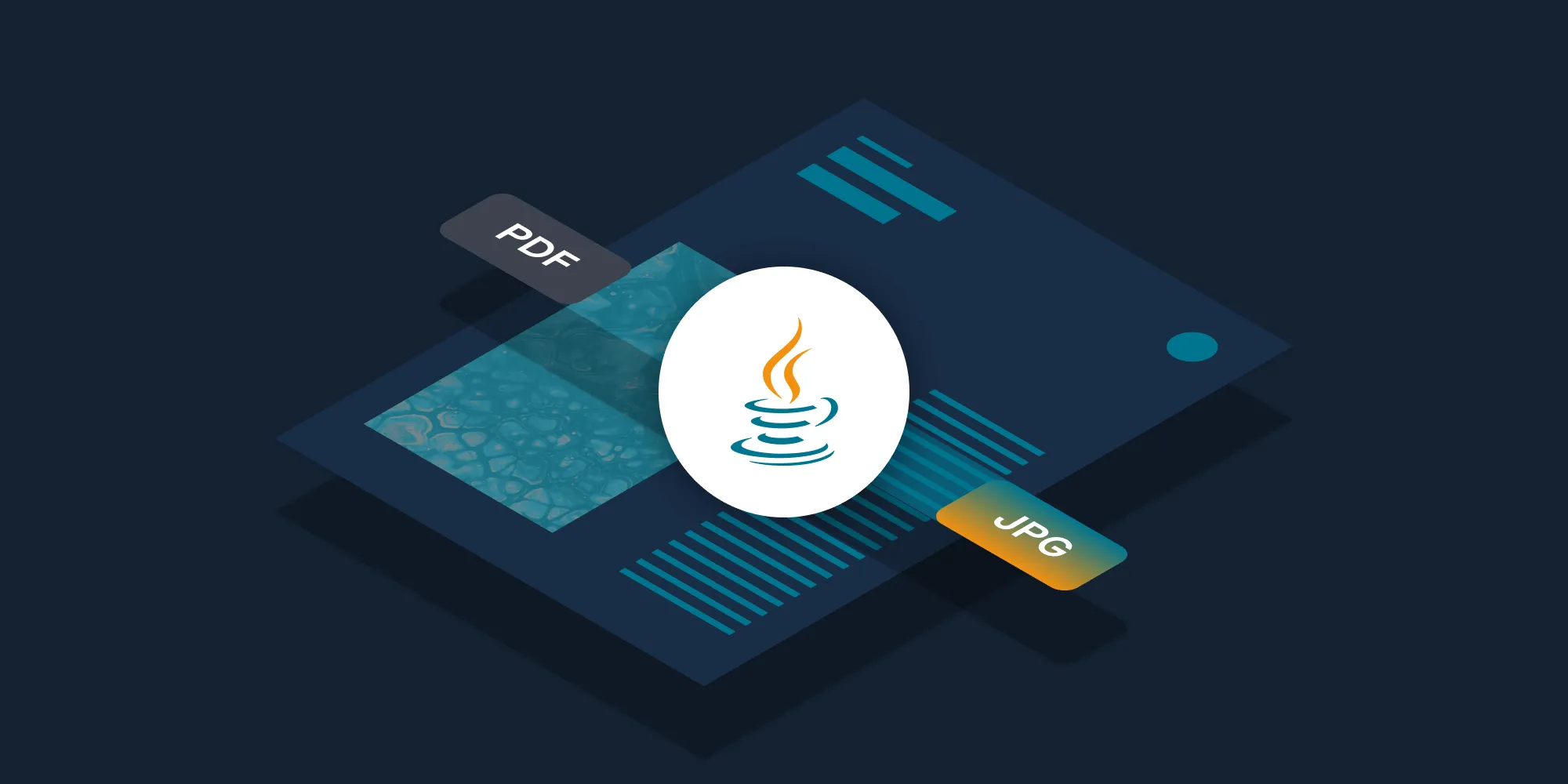How to convert Excel to PDF using Java
Table of contents
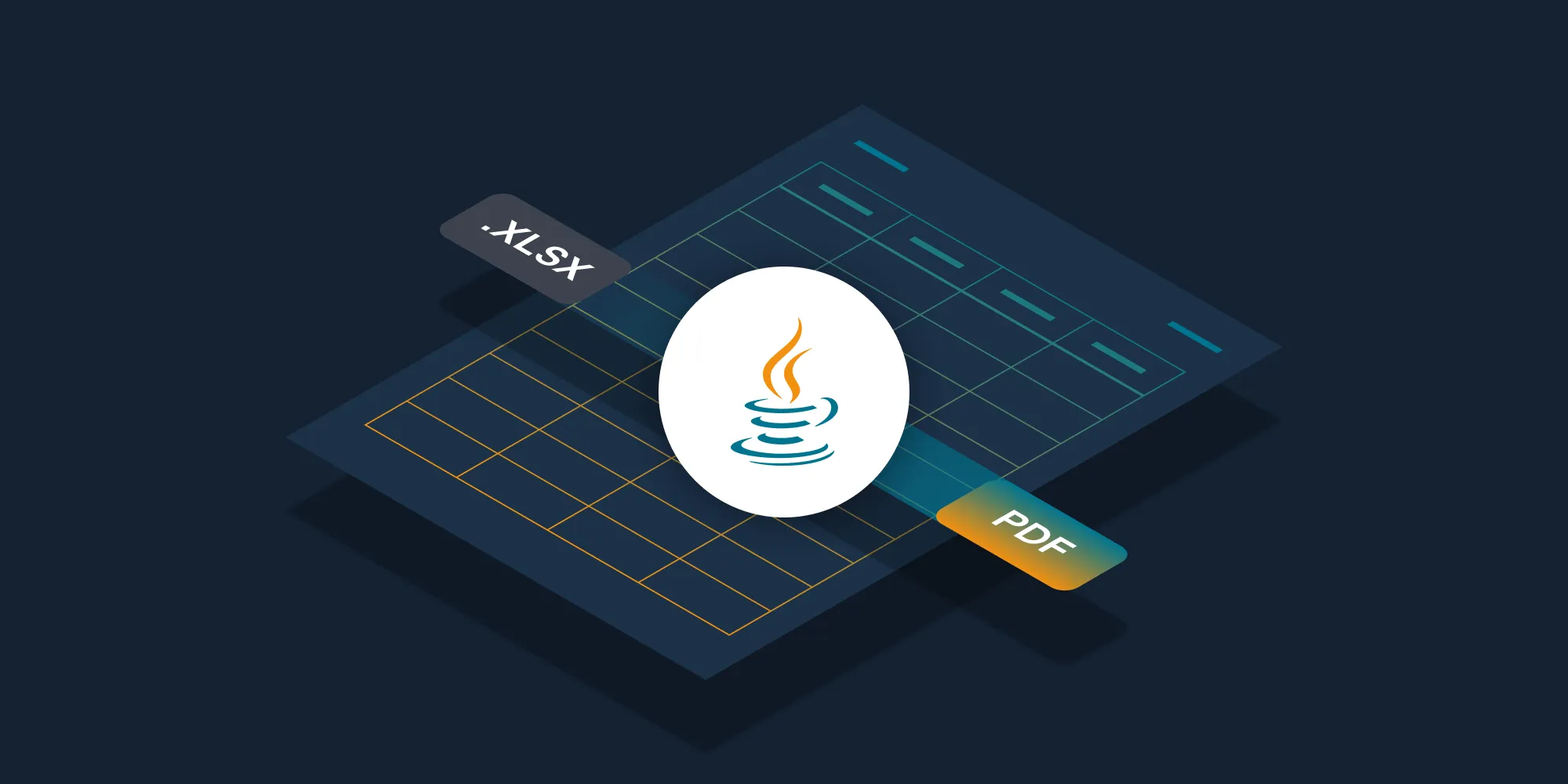
This tutorial demonstrates how to convert Excel files to PDF using Nutrient's Java API. The guide walks through creating a free API account, setting up a Java project with Gradle, and implementing the conversion using OkHttp for API requests. The implementation showcases how to use the API's document conversion capabilities, which can be combined with other API tools for complex document processing workflows like merging, OCR, watermarking, and page manipulation.
In this post, you’ll learn how to convert Excel files to PDFs in your Java applications using Nutrient’s XLSX-to-PDF Java API. With our API, you receive 100 credits with the free plan. Different operations on a document consume different amounts of credits, so the number of PDF documents you can generate may vary. All you need to do is create a free account(opens in a new tab) to get access to your API key.
Nutrient API
Document conversion is just one of our 30+ PDF API tools. You can combine our conversion tool with other tools to create complex document processing workflows. You’ll be able to convert various file formats into PDFs and then:
- Merge several resulting PDFs into one
- OCR, watermark, or flatten PDFs
- Remove or duplicate specific PDF pages
Once you create your account, you’ll be able to access all our PDF API tools.
Step 1 — Creating a free account on Nutrient
Go to our website(opens in a new tab), where you’ll see the page below, prompting you to create your free account.
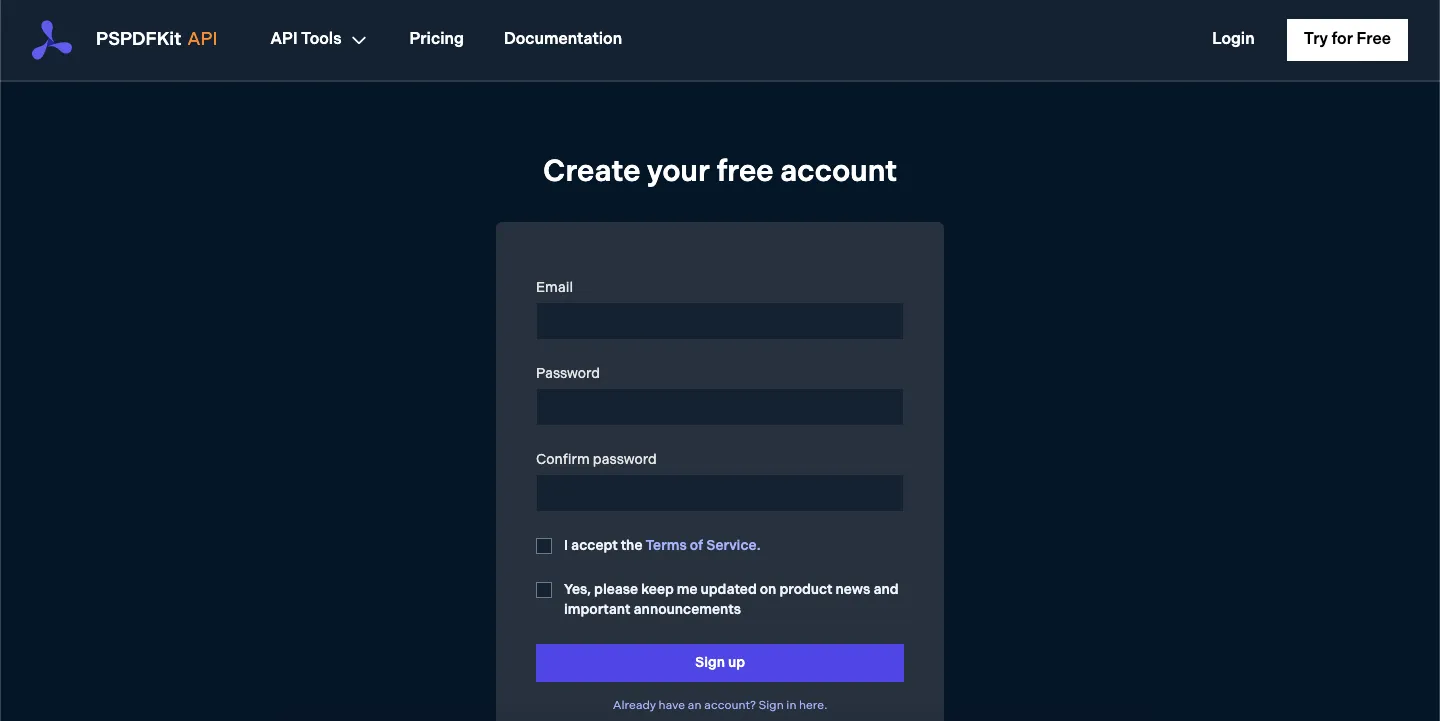
Once you’ve created your account, you’ll be welcomed by the page below, which shows an overview of your plan details.
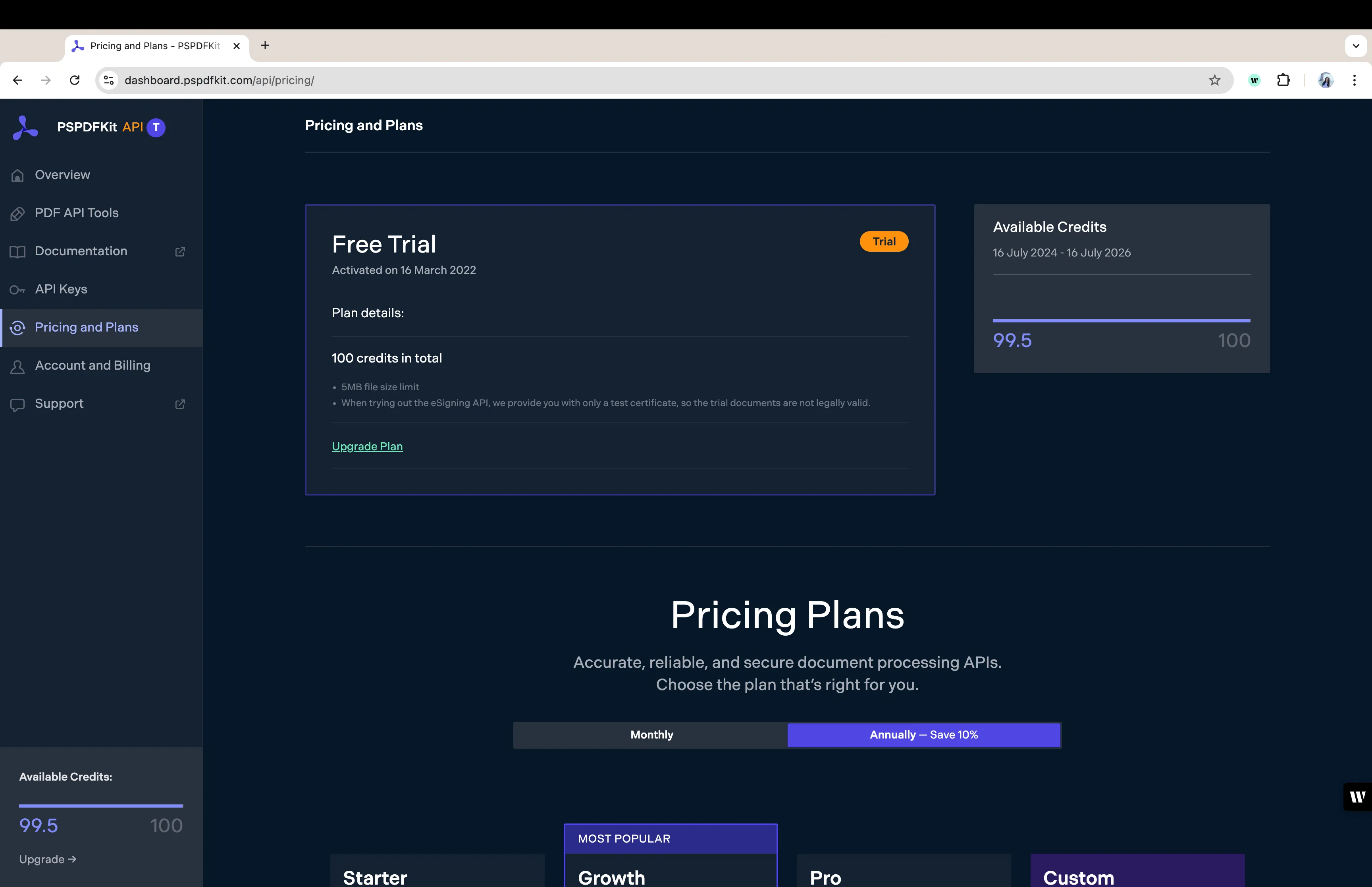
As you can see in the bottom-left corner, you’ll start with 100 credits to process, and you’ll be able to access all our PDF API tools.
Step 2 — Obtaining the API key
After you’ve verified your email, you can get your API key from the dashboard. In the menu on the left, click API Keys. You’ll see the following page, which is an overview of your keys:

Copy the Live API Key, because you’ll need this for the Excel-to-PDF API.
Step 3 — Setting up folders and files
For this tutorial, you’ll use IntelliJ IDEA as your primary code editor. Next, create a new project called excel_to_pdf. You can choose any location, but make sure to select Java as the language, Gradle as the build system, and Groovy as the Gradle DSL.
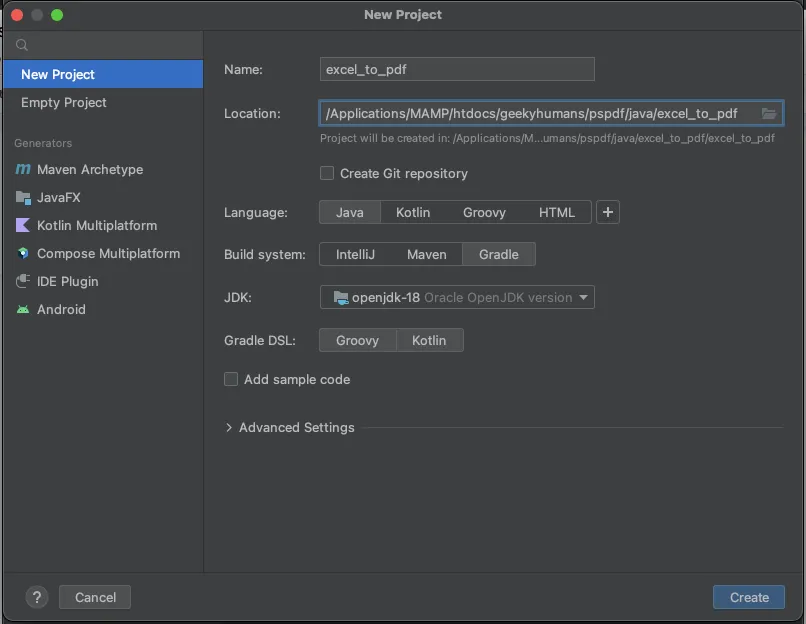
Create a new directory in your project. Right-click on your project’s name and select New > Directory. From there, choose the src/main/java option. Once done, create a class file inside the src/main/java folder called processor.java, and create two folders called input_documents and processed_documents in the root folder.
After that, paste your Excel file inside the input_documents folder. You can use our demo document as an example.
Your folder structure will look like this:
excel_to_pdf├── input_documents| └── document.xlsx├── processed_documents├── src| └── main| └── java| └── processor.javaStep 4 — Installing dependencies
Next, you’ll install two libraries:
OkHttp — This library makes API requests.
JSON — This library will parse the JSON payload.
Open the build.gradle file and add the following dependencies to your project:
dependencies { implementation 'com.squareup.okhttp3:okhttp:4.9.2' implementation 'org.json:json:20210307'}Once done, click the Add Configuration button in IntelliJ IDEA. This will open a dropdown menu.
![]()
Next, select Application from the menu:
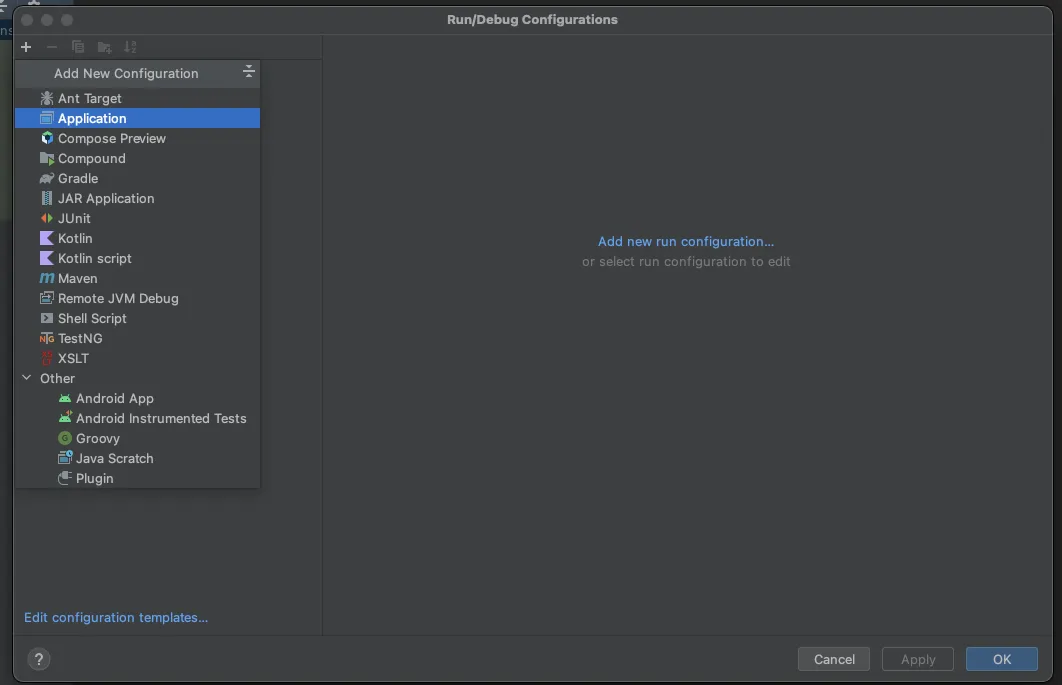
Now, fill the form with the required details. Most of the fields will be prefilled, but you need to select java 18 in the module field and add -cp excel_to_pdf.main as the main class and Processor in the field below it.
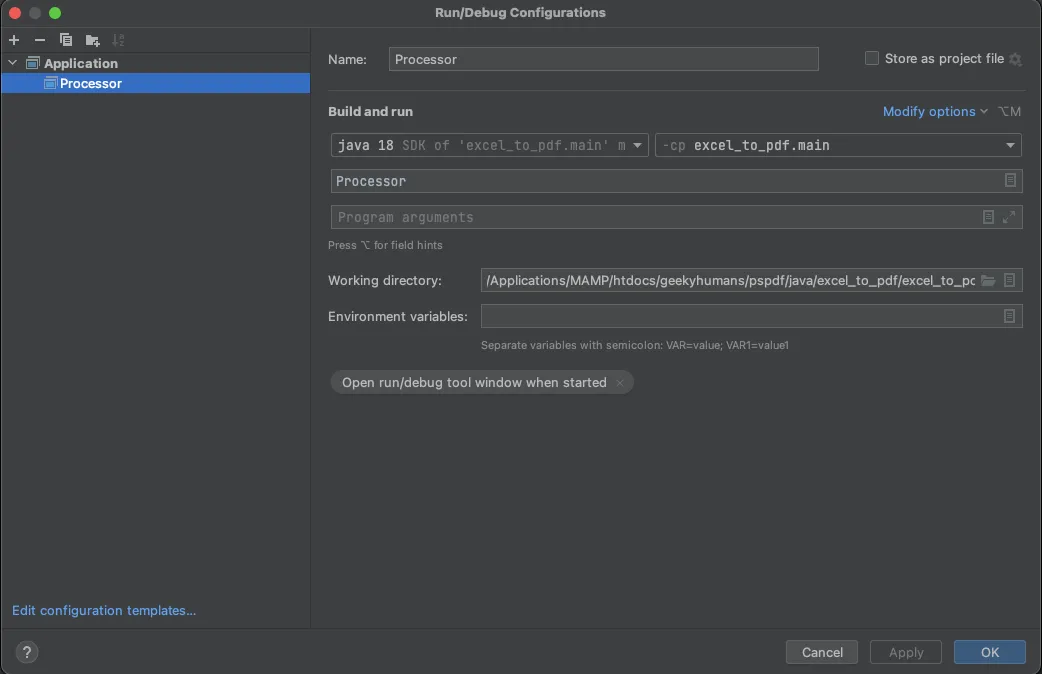
To apply settings, click the Apply button.
Step 5 — Writing the code
Now, open the processor.java file and paste the code below into it:
import java.io.File;import java.io.IOException;import java.nio.file.FileSystems;import java.nio.file.Files;import java.nio.file.StandardCopyOption;
import org.json.JSONArray;import org.json.JSONObject;
import okhttp3.MediaType;import okhttp3.MultipartBody;import okhttp3.OkHttpClient;import okhttp3.Request;import okhttp3.RequestBody;import okhttp3.Response;
public final class Processor { public static void main(final String[] args) throws IOException { final RequestBody body = new MultipartBody.Builder() .setType(MultipartBody.FORM) .addFormDataPart( "document", "document.xlsx", RequestBody.create( new File("input_documents/document.xlsx"), MediaType.parse("application/vnd.openxmlformats-officedocument.spreadsheetml.sheet") ) ) .addFormDataPart( "instructions", new JSONObject() .put("parts", new JSONArray() .put(new JSONObject() .put("file", "document") ) ).toString() ) .build();
final Request request = new Request.Builder() .url("https://api.nutrient.io/build") .method("POST", body) .addHeader("Authorization", "Bearer YOUR_API_KEY_HERE") .build();
final OkHttpClient client = new OkHttpClient() .newBuilder() .build();
final Response response = client.newCall(request).execute();
if (response.isSuccessful()) { Files.copy( response.body().byteStream(), FileSystems.getDefault().getPath("processed_documents/result.pdf"), StandardCopyOption.REPLACE_EXISTING ); } else { // Handle the error. throw new IOException(response.body().string()); } }}Make sure to replace YOUR_API_KEY_HERE with your API key.
Code explanation
In the code above, you’re importing all the packages required to run the code and creating a class called processor. In the main function, you’re first creating the request body for the API call that contains all the instructions for converting the PDF. After that, you’re calling the API to process the instructions.
You’re then calling the execute() function and passing the request variable. The response of the API is then stored in the folder called processed_documents.
Output
To execute the code, click the Run button (which is a little green arrow). This is next to the field that says Processor, which is where you set the configuration.

On the successful execution of the code, you’ll see a new processed file named result.pdf in the processed_documents folder.
The folder structure will look like this:
excel_to_pdf├── input_documents| └── document.xlsx├── processed_documents| └── result.pdf├── src| └── main| └── java| └── processor.javaFinal words
In this post, you learned how to convert Excel files to PDF documents for your Java application using our Excel-to-PDF Java API.
You can integrate these functions into your existing applications. With the same API token, you can also perform other operations, such as merging several documents into a single PDF, adding watermarks, and more. To get started with a free trial, sign up(opens in a new tab) here.





